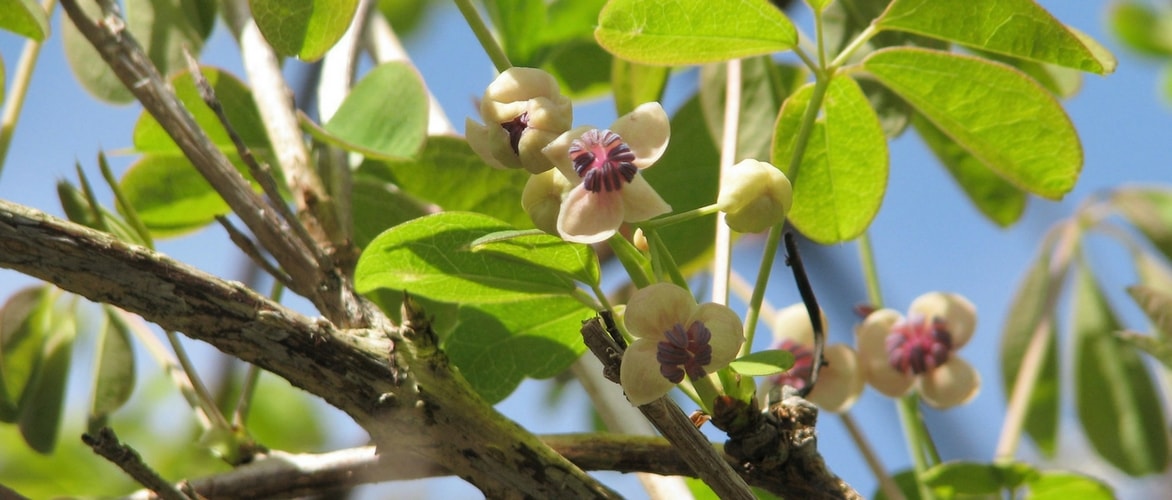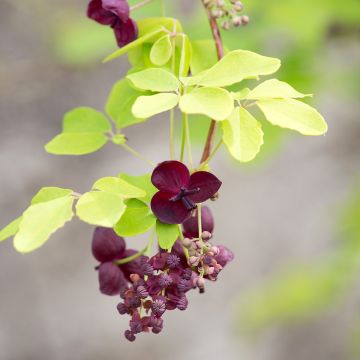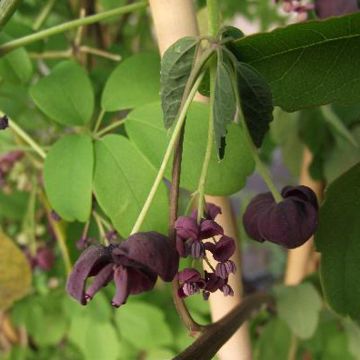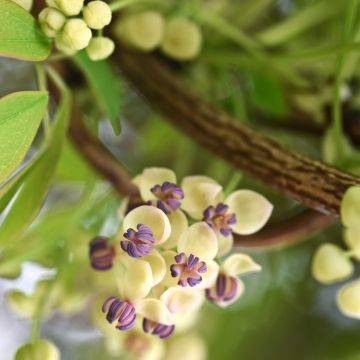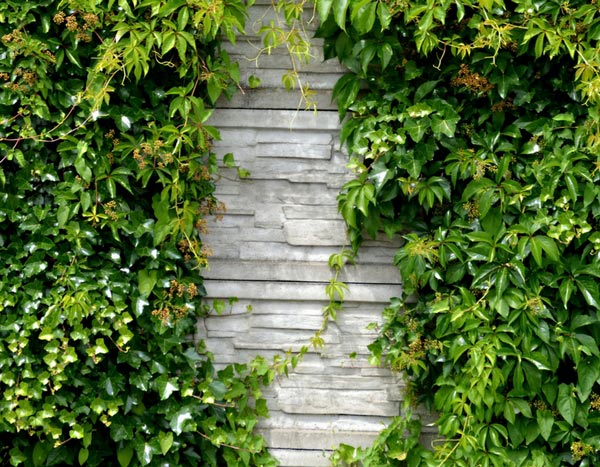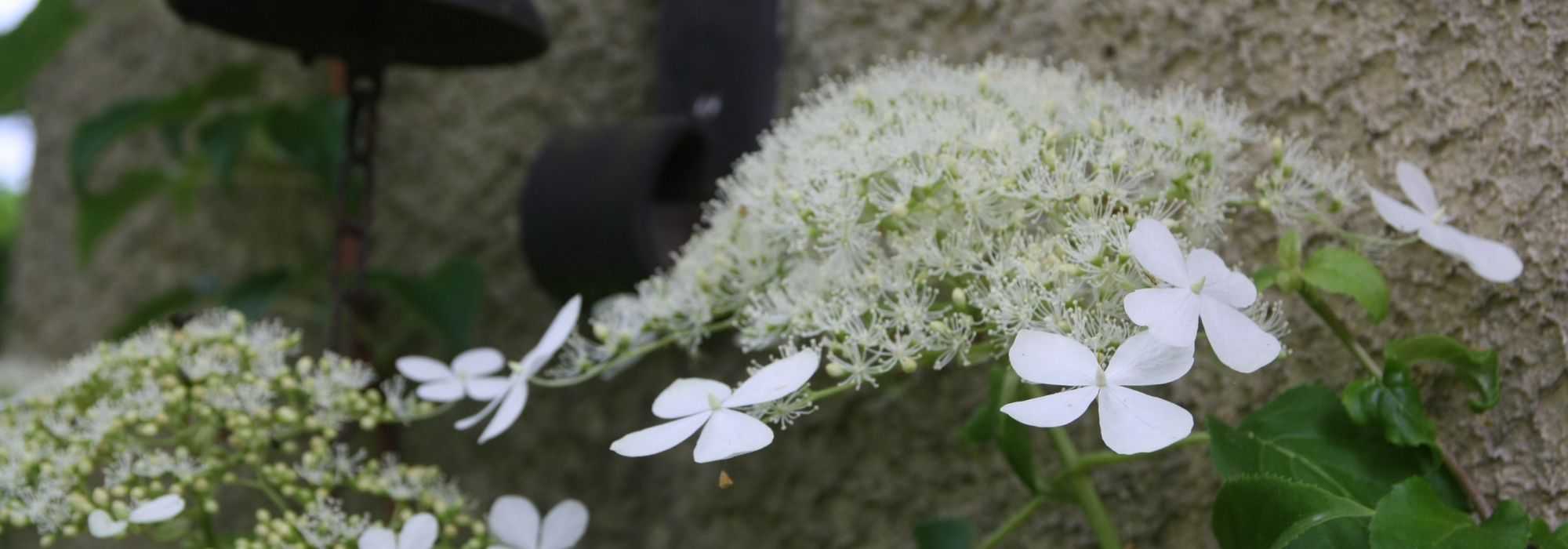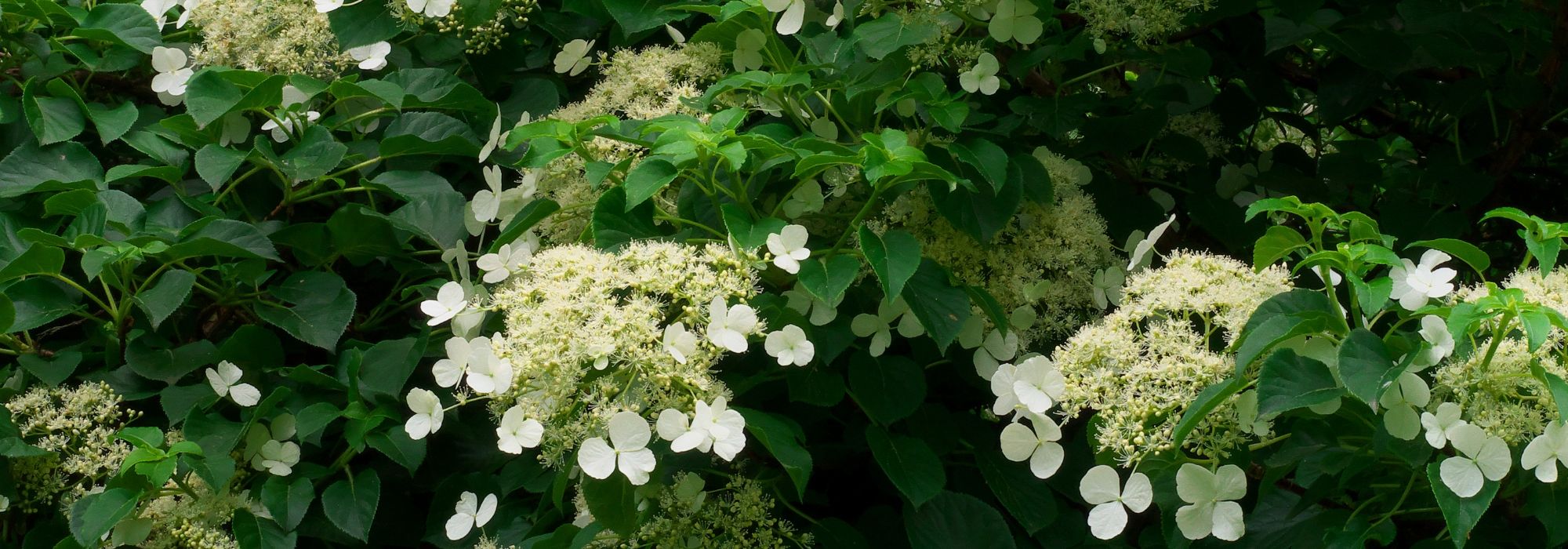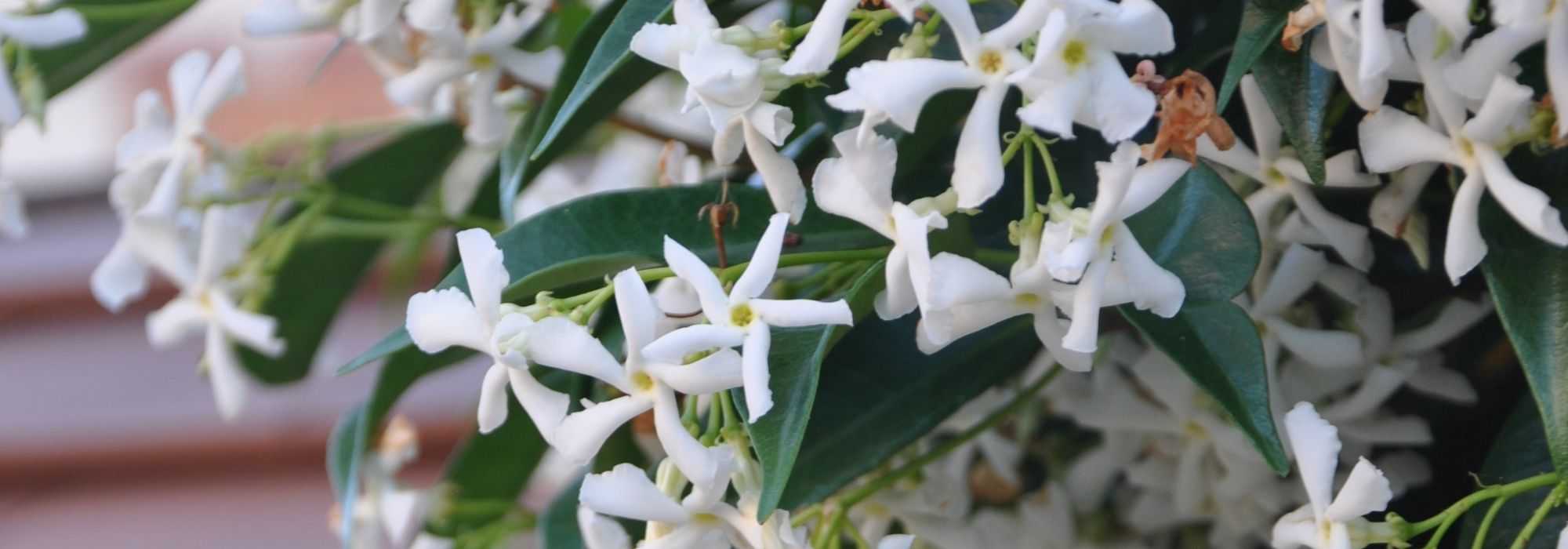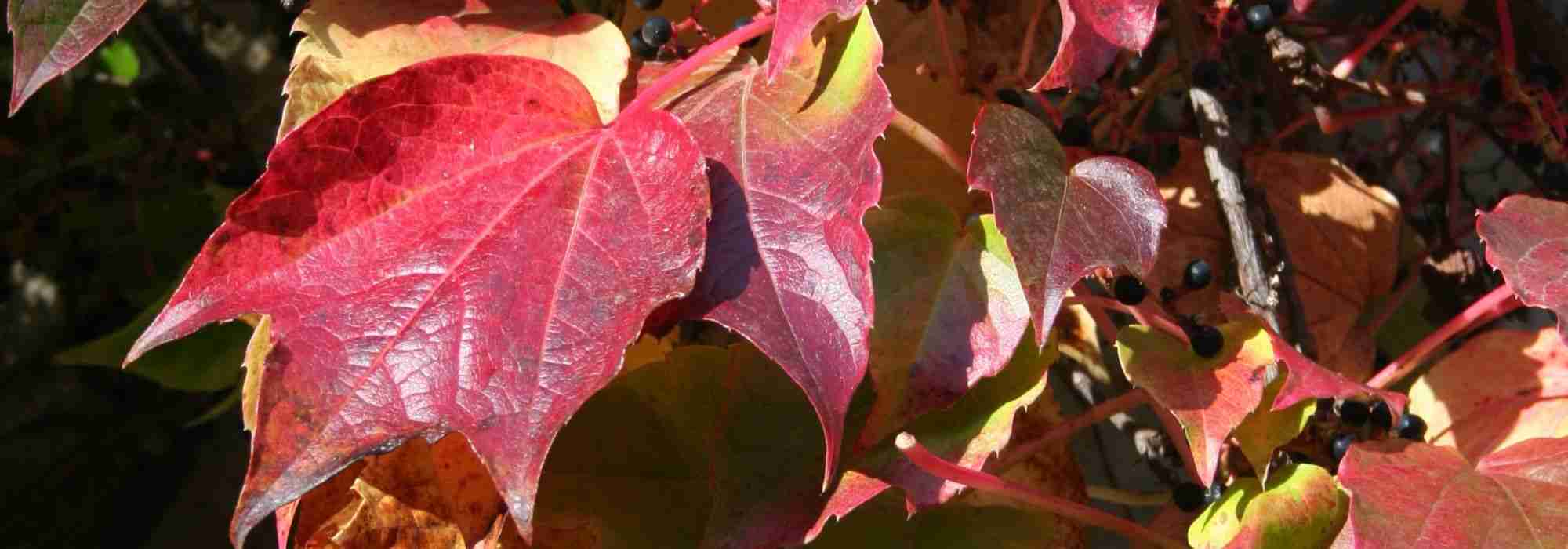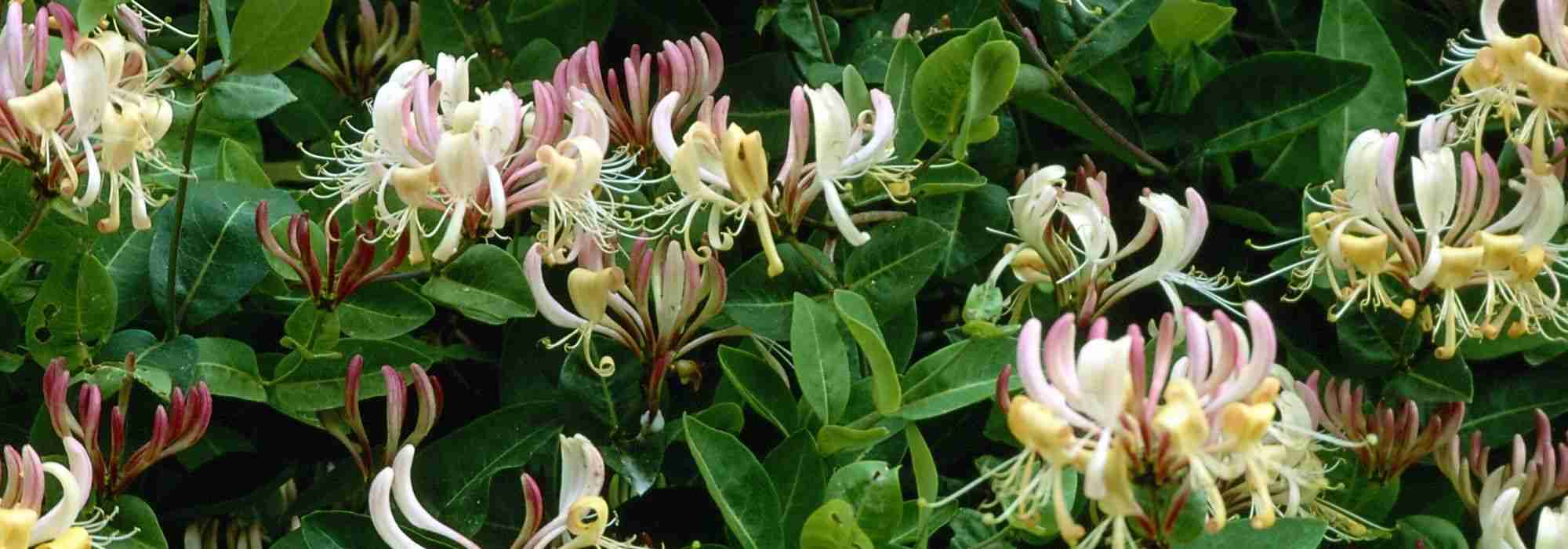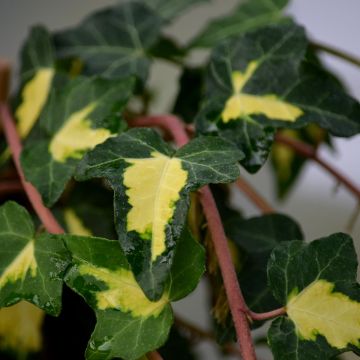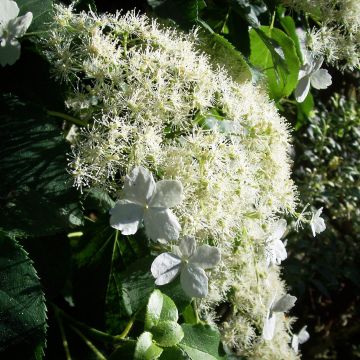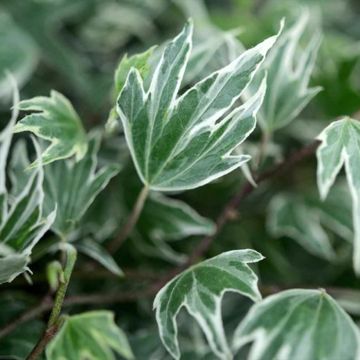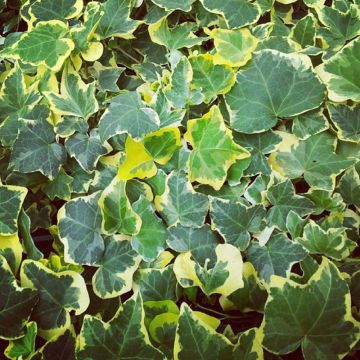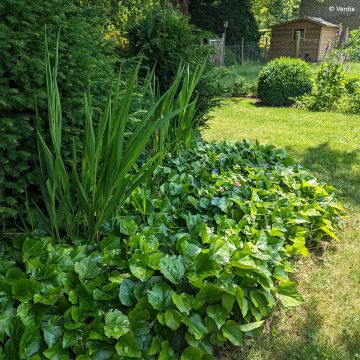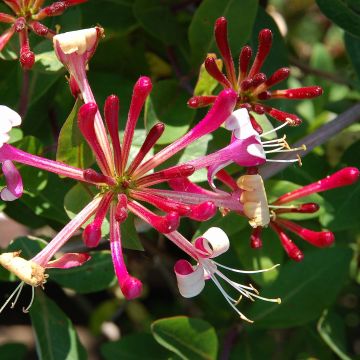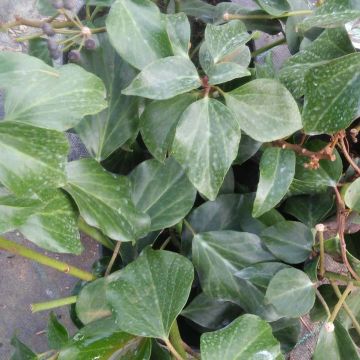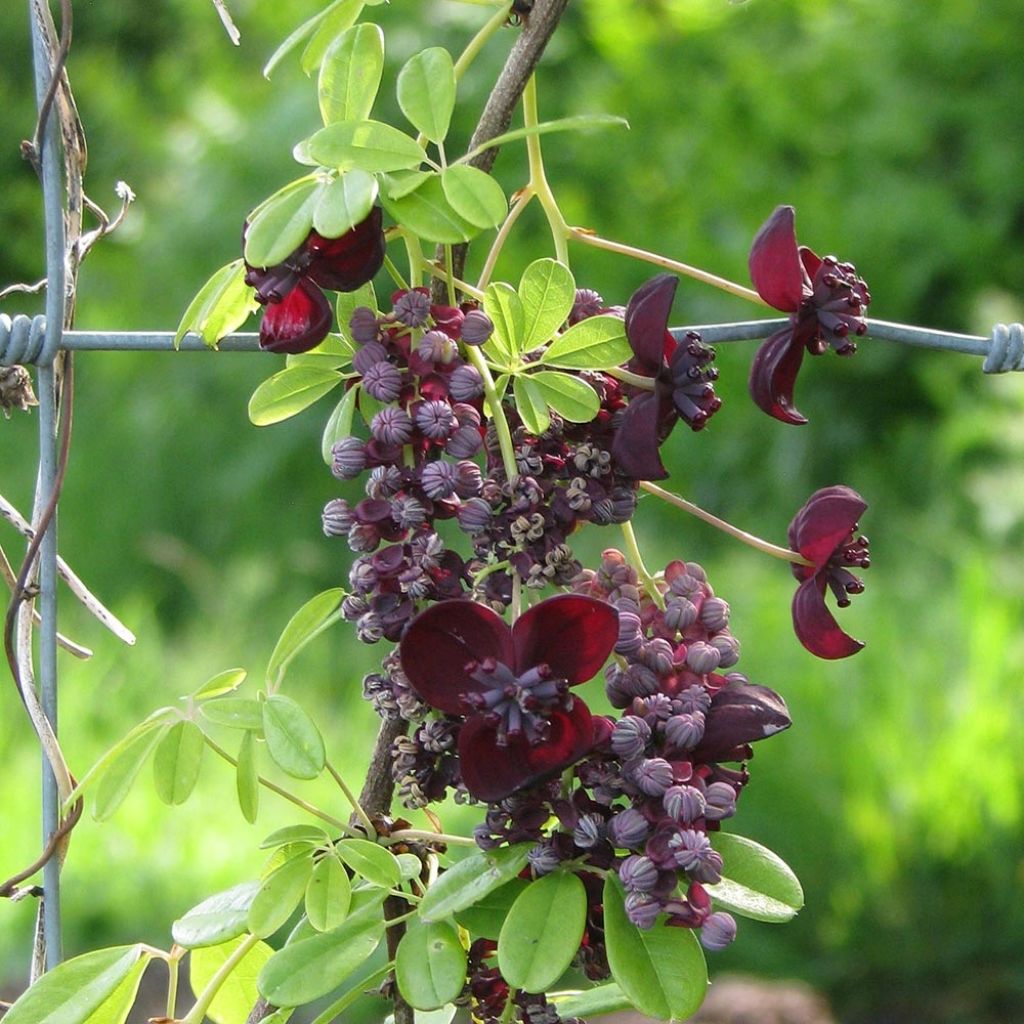

Akebia longeracemosa - Akébie à longue grappe
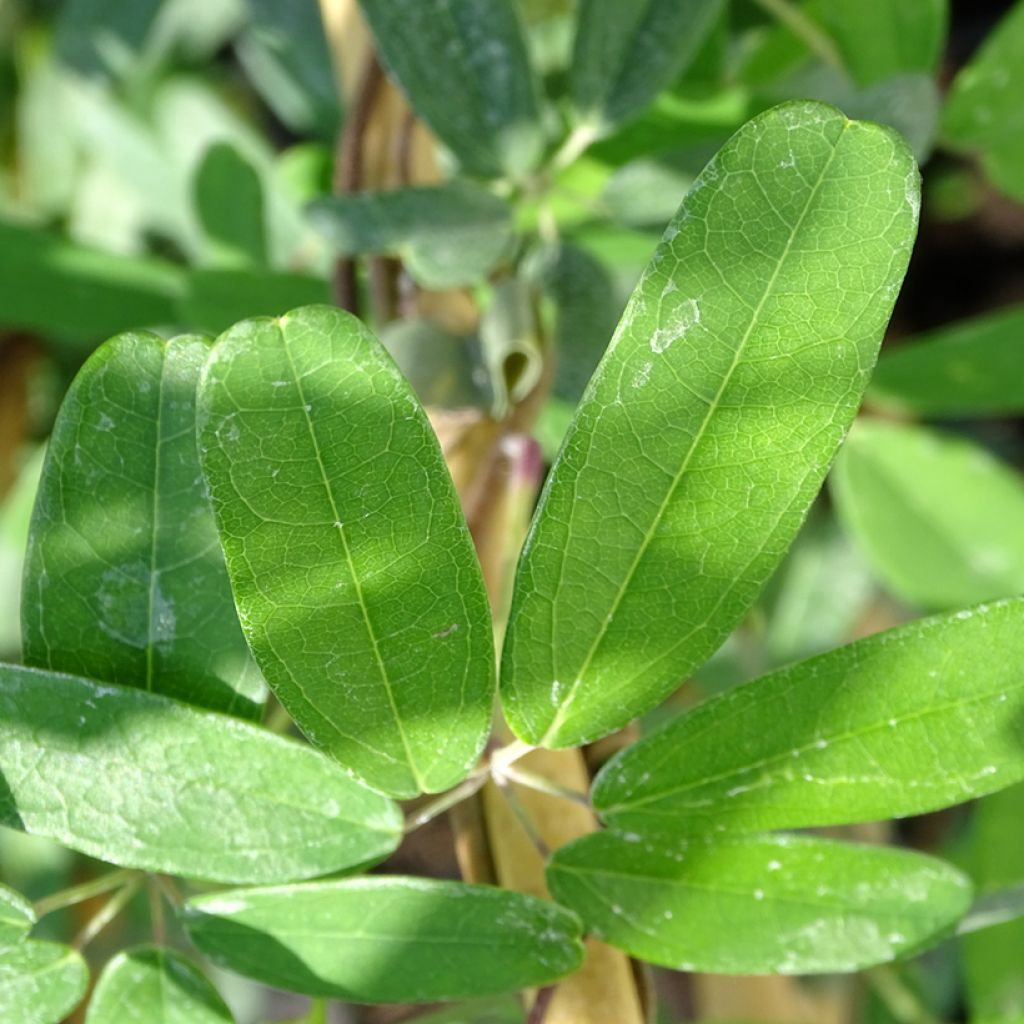

Akebia longeracemosa - Akébie à longue grappe
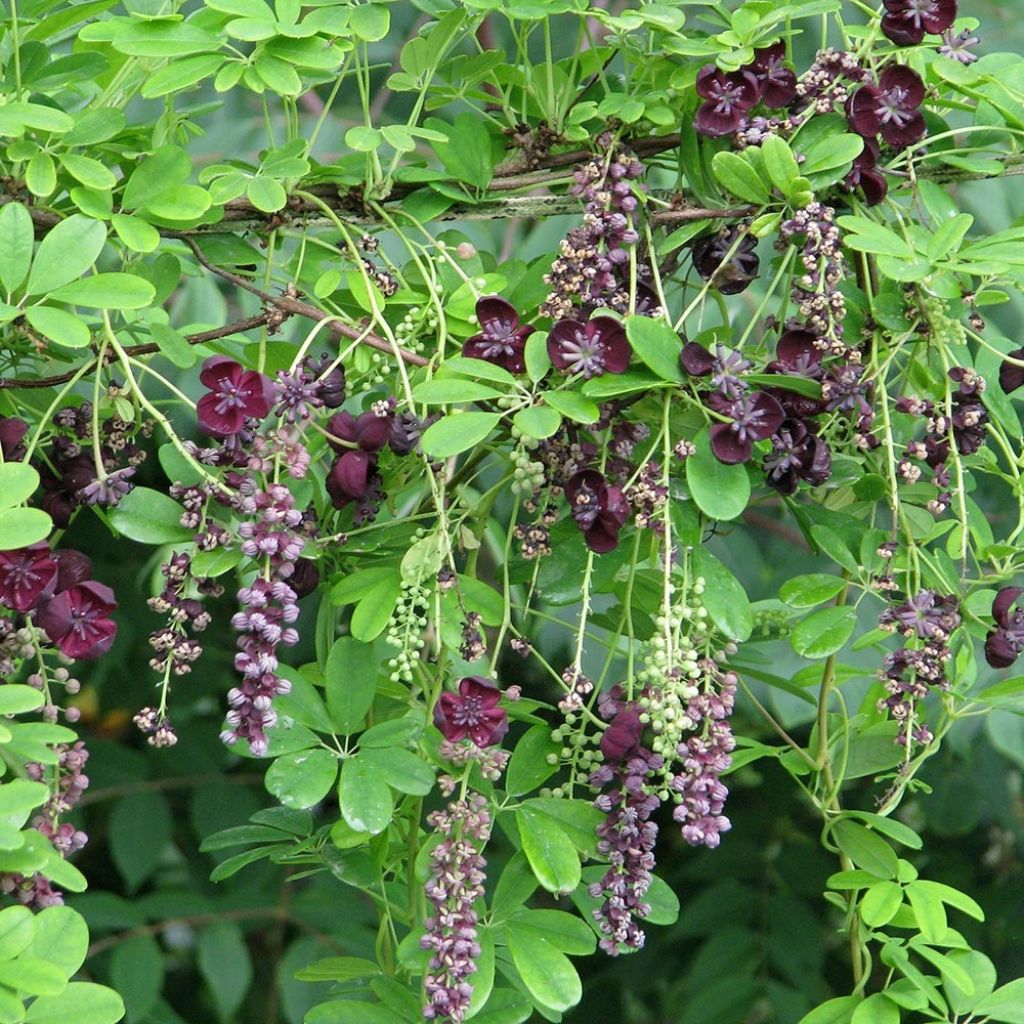

Akebia longeracemosa - Akébie à longue grappe
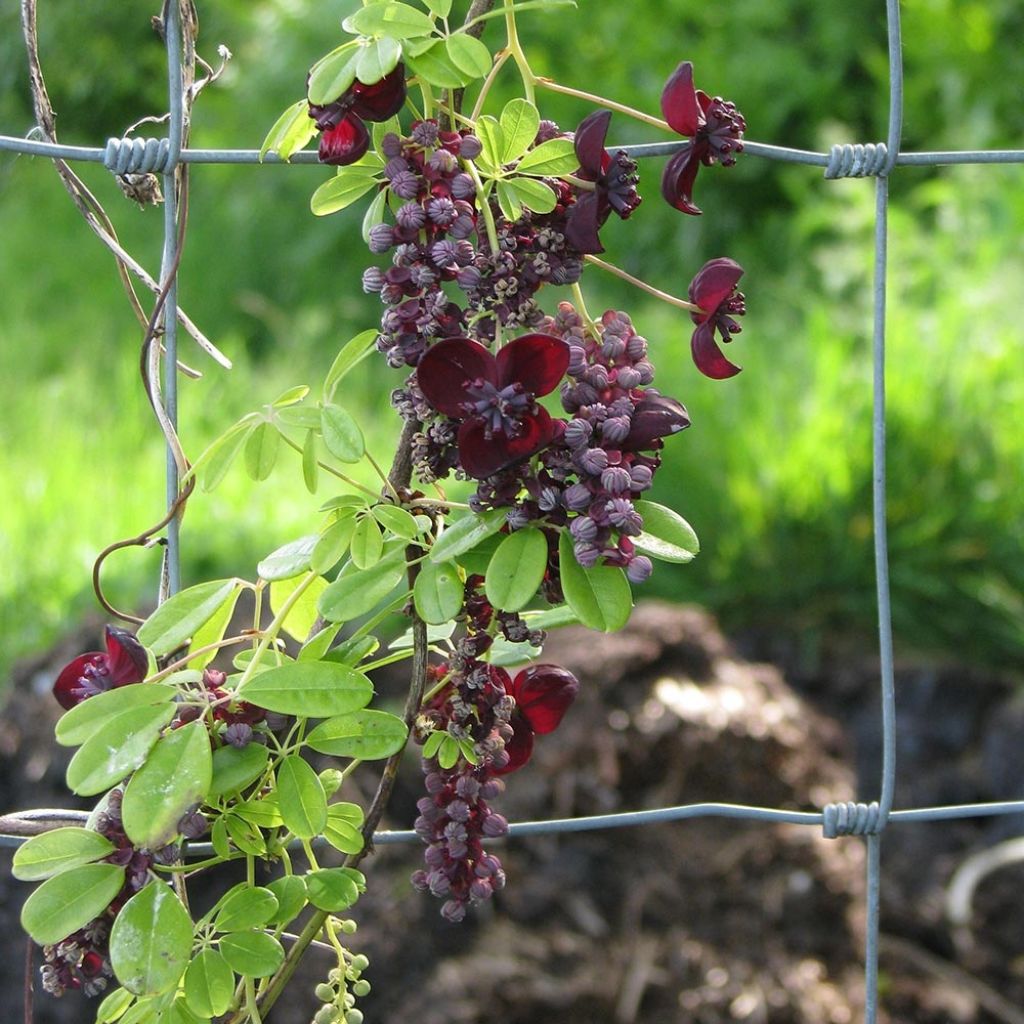

Akebia longeracemosa - Akébie à longue grappe
Akebia longeracemosa
Akebia longeracemosa
Long-racemed Akebia
Planted in spring 2022. Vigorous and well established on the trellis. Its long clusters of flowers are delightful.
LB, 12/02/2025
Special offer!
Receive a €20 voucher for any order over €90 (excluding delivery costs, credit notes, and plastic-free options)!
1- Add your favorite plants to your cart.
2- Once you have reached €90, confirm your order (you can even choose the delivery date!).
3- As soon as your order is shipped, you will receive an email containing your voucher code, valid for 3 months (90 days).
Your voucher is unique and can only be used once, for any order with a minimum value of €20, excluding delivery costs.
Can be combined with other current offers, non-divisible and non-refundable.
Home or relay delivery (depending on size and destination)
Schedule delivery date,
and select date in basket
This plant carries a 6 months recovery warranty
More information
We guarantee the quality of our plants for a full growing cycle, and will replace at our expense any plant that fails to recover under normal climatic and planting conditions.

Would this plant suit my garden?
Set up your Plantfit profile →
Description
Akebia longeracemosa, also known as the long-racemed Akebia, is a climbing plant of great uniqueness. In this very rarely cultivated Taiwanese species, the pendulous flower clusters measure about 15 cm (6in) in length. They bloom in spring, from May to July: with a chocolate-purple colour that is absolutely exquisite, they are sure to amaze with their exotic appearance and delicious vanilla fragrance. The semi-evergreen foliage is also highly ornamental, boasting a light and graceful design. This hardy Akebia thrives in damp but well-drained, fertile soils, and a sunny position.
This beautiful climbing plant with woody stems, native to subtropical and temperate forests and mountain slopes in Asia, belongs to the Lardizabalaceae family. It will quickly reach a height of 3 to 5m (10 to 16ft) with a spread of 2m (7ft), sometimes more if the growing conditions are favourable. Akebia longeracemosa bears beautiful trailing clusters of bell-shaped flowers, approximately 15 cm (6in) in length, in a dark purple coluor, from May to June or even July. As a monoecious plant, it carries both male and female flowers on the same plant, with the female flowers being larger. This highly nectar-rich flowering emits a vanilla fragrance. However, the plant is not self-fertile and requires the presence of a second plant nearby to produce fruits. The fruits appear during a warm summer. They have the shape of large swollen and arched beans, in a purple colour, approximately 6 cm (2in) long and 2 cm (1in) wide. Although edible, they offer a not very flavourful white flesh, surrounding large black seeds. The semi-evergreen or deciduous foliage, depending on the climate, is highly ornamental. It consists of five medium green oblong leaflets, which appear in spring, and takes on reddish hues in autumn.
With its exotic appearance, Akebia longeracemosa is a climbing plant of excellent hardiness, tolerating temperatures as low as -13°C (8.6°F) to -18°C (-0.4°F) in mature specimens. It clings to its support with its stems with tendrils, and can be planted on a pergola, a wall, or in a tree alongside a climbing rose or an evergreen honeysuckle, preferably in a sheltered and sunny location.
Akebia longeracemosa in pictures
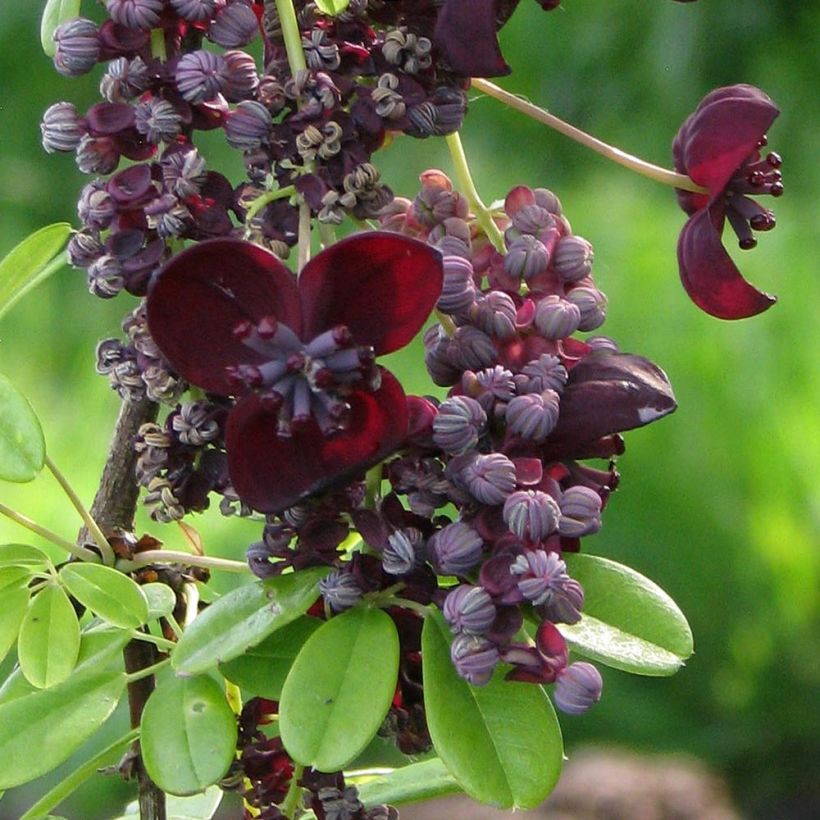

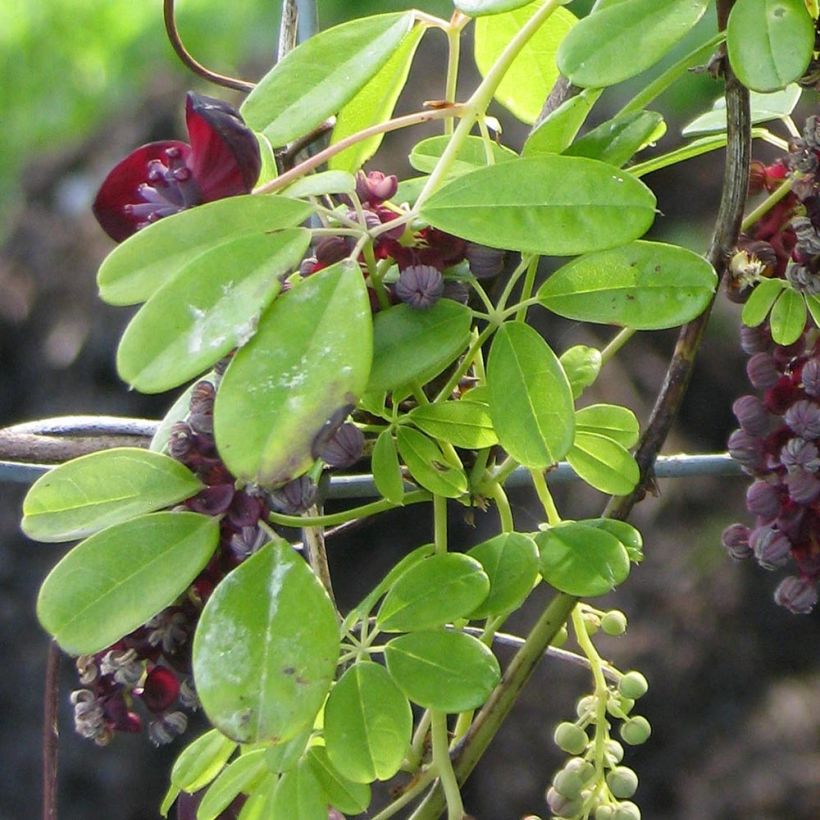

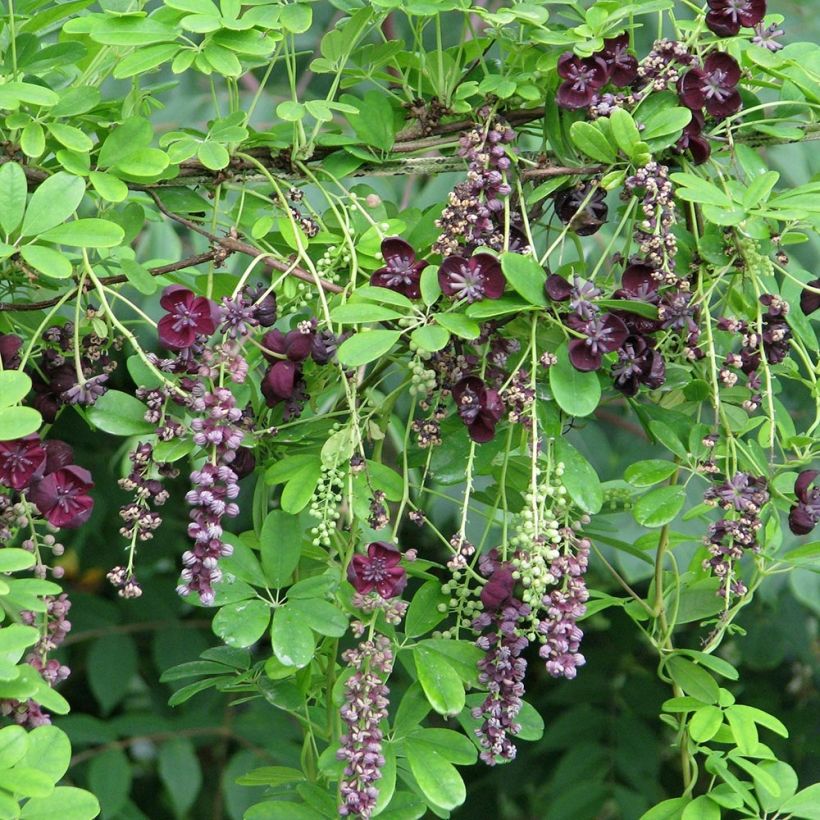

Plant habit
Flowering
Foliage
Botanical data
Akebia
longeracemosa
Lardizabalaceae
Long-racemed Akebia
East Asia
Other Akebias
View all →Planting and care
Undemanding, Akebia longeracemosa adapts to all types of soil with a preference for rich and well-drained, neutral or slightly acidic soils. It appreciates sunny or semi-shady situations (although it should avoid full sun in the South region). Apply organic fertiliser at planting, and then every spring. It does not require pruning. However, it will still benefit from a spring cleaning after flowering, which will remove the most troublesome branches.
Planting period
Intended location
Care
Planting & care advice
-
, onOrder confirmed
Reply from on Promesse de fleurs
Similar products
Haven't found what you were looking for?
Hardiness is the lowest winter temperature a plant can endure without suffering serious damage or even dying. However, hardiness is affected by location (a sheltered area, such as a patio), protection (winter cover) and soil type (hardiness is improved by well-drained soil).

Photo Sharing Terms & Conditions
In order to encourage gardeners to interact and share their experiences, Promesse de fleurs offers various media enabling content to be uploaded onto its Site - in particular via the ‘Photo sharing’ module.
The User agrees to refrain from:
- Posting any content that is illegal, prejudicial, insulting, racist, inciteful to hatred, revisionist, contrary to public decency, that infringes on privacy or on the privacy rights of third parties, in particular the publicity rights of persons and goods, intellectual property rights, or the right to privacy.
- Submitting content on behalf of a third party;
- Impersonate the identity of a third party and/or publish any personal information about a third party;
In general, the User undertakes to refrain from any unethical behaviour.
All Content (in particular text, comments, files, images, photos, videos, creative works, etc.), which may be subject to property or intellectual property rights, image or other private rights, shall remain the property of the User, subject to the limited rights granted by the terms of the licence granted by Promesse de fleurs as stated below. Users are at liberty to publish or not to publish such Content on the Site, notably via the ‘Photo Sharing’ facility, and accept that this Content shall be made public and freely accessible, notably on the Internet.
Users further acknowledge, undertake to have ,and guarantee that they hold all necessary rights and permissions to publish such material on the Site, in particular with regard to the legislation in force pertaining to any privacy, property, intellectual property, image, or contractual rights, or rights of any other nature. By publishing such Content on the Site, Users acknowledge accepting full liability as publishers of the Content within the meaning of the law, and grant Promesse de fleurs, free of charge, an inclusive, worldwide licence for the said Content for the entire duration of its publication, including all reproduction, representation, up/downloading, displaying, performing, transmission, and storage rights.
Users also grant permission for their name to be linked to the Content and accept that this link may not always be made available.
By engaging in posting material, Users consent to their Content becoming automatically accessible on the Internet, in particular on other sites and/or blogs and/or web pages of the Promesse de fleurs site, including in particular social pages and the Promesse de fleurs catalogue.
Users may secure the removal of entrusted content free of charge by issuing a simple request via our contact form.
The flowering period indicated on our website applies to countries and regions located in USDA zone 8 (France, the United Kingdom, Ireland, the Netherlands, etc.)
It will vary according to where you live:
- In zones 9 to 10 (Italy, Spain, Greece, etc.), flowering will occur about 2 to 4 weeks earlier.
- In zones 6 to 7 (Germany, Poland, Slovenia, and lower mountainous regions), flowering will be delayed by 2 to 3 weeks.
- In zone 5 (Central Europe, Scandinavia), blooming will be delayed by 3 to 5 weeks.
In temperate climates, pruning of spring-flowering shrubs (forsythia, spireas, etc.) should be done just after flowering.
Pruning of summer-flowering shrubs (Indian Lilac, Perovskia, etc.) can be done in winter or spring.
In cold regions as well as with frost-sensitive plants, avoid pruning too early when severe frosts may still occur.
The planting period indicated on our website applies to countries and regions located in USDA zone 8 (France, United Kingdom, Ireland, Netherlands).
It will vary according to where you live:
- In Mediterranean zones (Marseille, Madrid, Milan, etc.), autumn and winter are the best planting periods.
- In continental zones (Strasbourg, Munich, Vienna, etc.), delay planting by 2 to 3 weeks in spring and bring it forward by 2 to 4 weeks in autumn.
- In mountainous regions (the Alps, Pyrenees, Carpathians, etc.), it is best to plant in late spring (May-June) or late summer (August-September).
The harvesting period indicated on our website applies to countries and regions in USDA zone 8 (France, England, Ireland, the Netherlands).
In colder areas (Scandinavia, Poland, Austria...) fruit and vegetable harvests are likely to be delayed by 3-4 weeks.
In warmer areas (Italy, Spain, Greece, etc.), harvesting will probably take place earlier, depending on weather conditions.
The sowing periods indicated on our website apply to countries and regions within USDA Zone 8 (France, UK, Ireland, Netherlands).
In colder areas (Scandinavia, Poland, Austria...), delay any outdoor sowing by 3-4 weeks, or sow under glass.
In warmer climes (Italy, Spain, Greece, etc.), bring outdoor sowing forward by a few weeks.






























